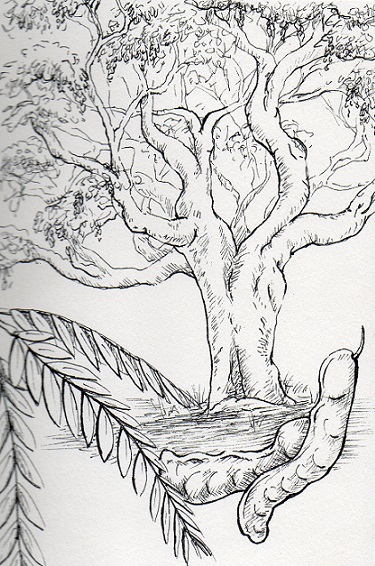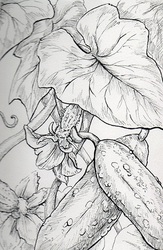Sign In
CloseToday's Nature post features the Mesquite tree. Belonging to the genus Prosopis, Mesquite is a name for multiple plants including over 40 species of small trees known for the property of growing legumes. Many types of legumes include alfalfa, peas, beans, chickpeas, peanuts, and soybeans. Mesquite trees can be found throughout areas of Mexico and southwestern United States. The creeping mesquite found in southern California is actually an invasive species. The origins of this plant come from the Tamaulipan Mezquital ecoregion located along Northeastern Mexico and the Southern United States in areas such as portions of Nuevo Leon, Northern Tamaulipas, and portions of the Gulf Coastal plain in southern Texas. Known for needing very little water, Mesquite trees prefer dry, desert environments where they are one of the only plants to return nitrogen into the earth. They are able to survive their arid habitats with a range of adaptations. Small, wax coated leaves reduce evaporation of the plant's water and they have been known to shed their leaves during droughts to retain even more water. Their long thorns deter animals from grazing on their leaves and their seeds have been known to last for decades which improves the chance of germination. The roots of these trees are able to reach up to 200 feet under the ground. Mesquite grows to 10 to 15 feet tall depending on the species. Honey and Velvet Mesquite is known to grow up to 60 feet in habitats with enough resources. These crooked and warped trees bear thorns on their smaller branches and will lose their leaves throughout the winter. In the spring, they bloom tiny flowers in clusters called catkins that lure in insects that work as pollinators. Pods containing hard seeds are then grown which must be slit or cut open before they can germinate. The beans produced by the Mesquite tree was the primary food for caravans traveling across the United States during the frontier times and even earned the name "Manna from Heaven". The Mesquite beans are able to be stored for years and were also carried by early freighters throughout Mexico who would also feed it to their animals. Native Americans throughout Arizona and California used the Mesquite tree for multiple uses. It's bark was used in fabrics, rope, medicine, and basketry while it's branches and trunks were used to make bows, arrows, and furniture. Thorns were even used for sewing needles or for tattooing. Leaves could be brewed as a tea for an eyewash or to relieve head and stomach aches. The gum of the tree was even chewed, used as glue, hair dye, and face and pottery paint. The most useful of all was the mesquite's pod which provided a nutritious, bittersweet substance ground into a coarse meal which turned into a cake-like substance without cooking by adding water. Some cultures would use the seeds to create a flour called pinole which was baked into bread. Mesquite beans contain a vast amount of nutrition, being rich in magnesium, iron, protein, zinc, calcium, and more. Medical studies have found this food to be effective in controlling blood sugar levels. As a medicine, Mesquite was used commonly in many native tribes for treating open wounds, eye conditions, and skin ailments. Mesquite works as an antacid for stomach indigestion as well as an antibiotic with antiseptic properties. The leaves, bark, and roots contain antimicrobial, antispasmodic, and antifungal aspects that allow it to be made into a range of medicines. These include powders or teas for fungal infections, a disinfecting wash for minor wounds, an eye wash for inflammation, as well as treatments for stomach ulcers,diarrhea, headaches, and gastrointestinal inflammation. For reducing fevers and reducing menstrual bleeding, the inner white bark of the Mesquite tree was used due to it's antispasmodic qualities. It is the gum of the tree which is most useful for creating many of the medicines for treating eyes, skin ailments, a restorative, and more. These physical attributes of the Mesquite tree for healing translate directly to it's metaphysical properties. It is commonly used in healing mixtures or incense or added to ritual fires for cleansing and purification. For individual use, adding an infusion of Mesquite to a bath works well for purification. Mesquite trees are connected deeply with the element of earth and water and are often associated as a feminine energy.
Submission Information
- Views:
- 905
- Comments:
- 0
- Favorites:
- 0
- Rating:
- General
- Category:
- Visual / Traditional




